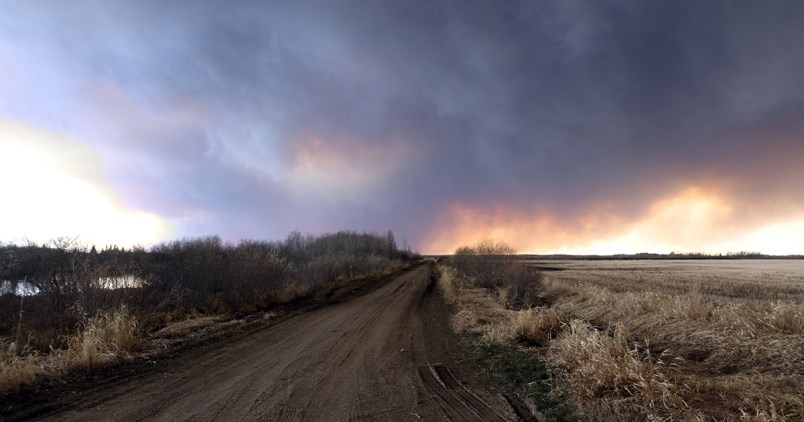RM OF TORCH RIVER — More resources are being brought to fight the English fire in the Fort à la Corne Provincial Forest.
“We have deployed a large number of resources on this fire, including an incident command team that have taken over specific management of the incident and an aerial ignition specialist team,” said Steve Roberts, the Saskatchewan Public Safety Agency’s acting vice-president of operations, on May 20.
There are 29 Public Safety Agency staff assigned to the fire, eight helicopters, 12 bulldozers, and nine crew trucks and engines. Water scooping aircraft and retardant aircraft are available at a Prince Albert airstrip roughly 30 kilometres away should they be required to support ground crews.
Roberts said there are more crews on the way and that there’s no problem getting enough staff to fight the fire.
As of May 20 at 11:30 a.m., the fire is at 40,000 hectares, an increase of 10 per cent since yesterday. For comparison’s sake, the City of Saskatoon is 22,800 hectares.
The fire has spread into nearby farmland. Roberts said the Public Safety Agency is working to measure how much farmland has been affected, but it was relatively small compared to the amount of forest burned.
No residents have been evacuated to date. The James Smith Cree Nation had looked at evacuating some senior elders, but they are staying in the community at a place with air scrubbers to provide fresh air.
If it becomes necessary to evacuate, officials are working on plans to ensure that no more than 10 people are in a group at once to follow health restrictions.
“A lot of communities are looking at ways that they can manage emergencies on site without evacuation and exposing their high risk people to exposure in another community,” Roberts said.
Roberts said there was good news in terms of the weather when it comes to fighting the fire.
“Even today, cooler temperatures overcast skies are reducing the fire behavior, allowing us to tighten up those control lines and get crews right in at the ground level on this fire,” he said.
“We are looking at a weather system coming in over the next 36 hours that is bringing even cooler temperatures and precipitation and that will certainly help the ground crews.”
Last week, the weather was against the firefighters, with heavy winds and a lack of rain.
The cause of the fire is yet to be determined. Investigators have concluded that lightning didn’t start the fire. They believe the cause was human in nature.



